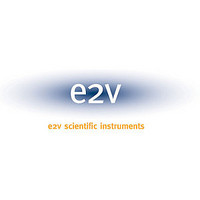TS68EN360VA25L E2V, TS68EN360VA25L Datasheet - Page 75

TS68EN360VA25L
Manufacturer Part Number
TS68EN360VA25L
Description
Manufacturer
E2V
Datasheet
1.TS68EN360VA25L.pdf
(83 pages)
Specifications of TS68EN360VA25L
Operating Temperature (min)
-40C
Operating Temperature Classification
Industrial
Mounting
Surface Mount
Lead Free Status / Rohs Status
Not Compliant
8.5
8.5.1
8.5.2
e2v semiconductors SAS 2008
Upgrading Designs from the TS68302
Architectural Approach
Hardware Compatibility Issues
Since the QUICC is a next-generation TS68302, many designers currently using the TS68302 may wish
to use the QUICC in a follow-on design. The following paragraphs briefly discuss this endeavor in terms
of architectural approach, hardware issues, and software issues.
The QUICC is the logical extension of the TS86302, but the overall architecture and philosophy of the
TS86302 design remains intact in the QUICC. The QUICC keeps the best features of the TS86302,
while making the changes required to provide for the increased flexibility, integration, and performance
requested by customers. Because the CPM is probably the most difficult module to learn, anyone who
has used the TS86302 can easily become familiar with the QUICC since the CPM architectural approach
remains intact.
The most significant architectural change made on the QUICC was the translation of the design into the
standard 68300 family IMB architecture, resulting in a faster CPU and different system integration
features.
Although the features of the SIM60 do not exactly correspond to those of the TS86302 SIM, they are
very similar.
Because of the similarity of the QUICC SIM60 and CPU to other members of the 68300 family, such as
the TS68332, previous users of these devices will be comfortable with these same features on the
QUICC.
The following list summarizes the hardware differences between the TS86302 and the QUICC:
• Pinout – The pinout is not the same. The QUICC has 240 pins; the TS86302 has 132 pins
• Package – Both devices offer PGA and PQFP packages. However, the QUICC QFP package has a
• System Bus – The system bus signals now look like those of the TS68020 as opposed to those of the
• System Bus in Slave Mode – A number of QUICC pins take on new functionality in slave mode to
• Peripheral Timing – The external timings of the peripherals (SCCs, timers, etc.) are very similar (if not
• Pin Assignments – The assignment of peripheral functions to I/O pins is different in several ways.
20-mil pitch; whereas, the TS86302 QFP package has a 25-mil pitch
68000. It is still possible to interface 68000 peripherals to the QUICC, utilizing the same techniques
used to interface them to a TS68020
support an external TS68EC040. On the TS68302, the pin names generally remained the same in
slave mode
identical) to corresponding peripherals on the TS68302
First, the QUICC contains more general-purpose parallel I/O pins than the TS68302. However, the
QUICC offers many more functions than even a 240-pin package would normally allow, resulting in
more multifunctional pins than the TS68302
0886C–HIREL–04/08
TS68EN360
75











